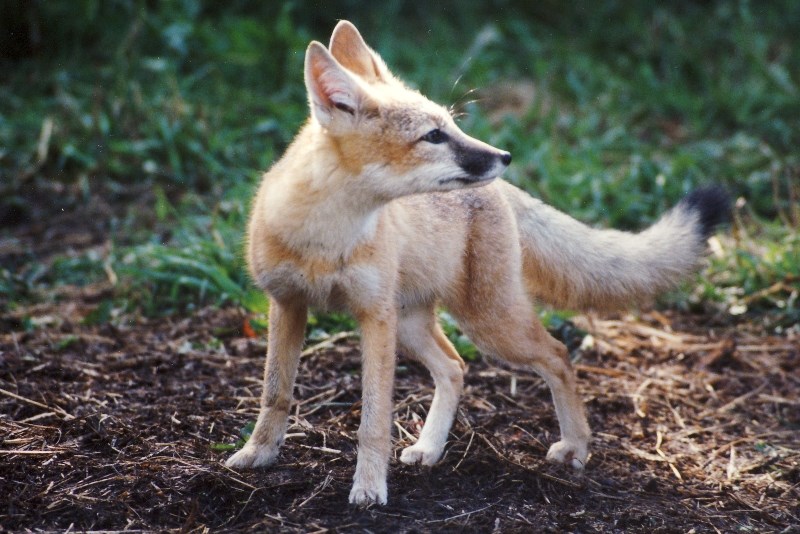Look out fellas, there’s a new fox in town.
Named Prudence because of her shy personality, the nearly one-year-old female swift fox is the newest member of the colony at the Cochrane Ecological Institute (CEI).
Acquired from the Endangered Wolf Centre in Missouri, the vixen — which is what female foxes are called — arrived safe and sound from her flight on Jan. 29. Clio Smeeton, president of CEI, said she has big plans for the small, shy fox.
“We have swift fox out there now, but not enough,” said the well-spoken Smeeton. “We need to achieve a self-sustaining population. That’s why Prudence is here: to help grow the population. She has new bloodlines, completely different from what we have.”
Prudence has been in quarantine since her arrival. After 30 days of isolation, Smeeton said the vixen will be introduced to the rest of the centre’s fox population.
“Hopefully the boys will like her,” Smeeton added with a laugh.
The smallest of North America’s fox breeds, the swift fox is not much bigger than a house cat and weighs no more than five or six pounds. Similar in colouring to a coyote, the foxes have extremely long tails with a black tip and eat creatures like insects, gophers and small birds.
The foxes were well on their way to extinction by the time Smeeton’s parents, Miles and Beryl Smeeton, decided to attempt to rebuild the population of the vanishing species through their foundation, the CEI.
The CEI has been working to rebuild the swift fox population throughout the northern prairies in both Canada and the U.S. by breeding the foxes in captivity and releasing them into their native habitat.
Working with a variety of partners, including Montana’s Blackfoot tribe, Alberta’s Kainai (Blood) Tribe and the University of Calgary, Smeeton said the institute has re-introduced nearly 1,000 foxes into the wild.
And with much success, said Smeeton. Since the CEI re-introduction program began in 1972, the status of the swift fox has gone from extirpated to endangered. In 2009, the Committee on the Status of Endangered Wildlife in Canada re-examined the species, bumping the status of the swift fox to threatened.
Despite their upgraded label, Smeeton said she’s continuing her efforts to rebuild the swift fox population — hence, Prudence.
“In Canada, we haven’t achieved a self-sustaining population — it hasn’t been proven,” she said.
For more information on the CEI’s preservation of endangered indigenous species, check out the centre’s website at ceinst.org.




